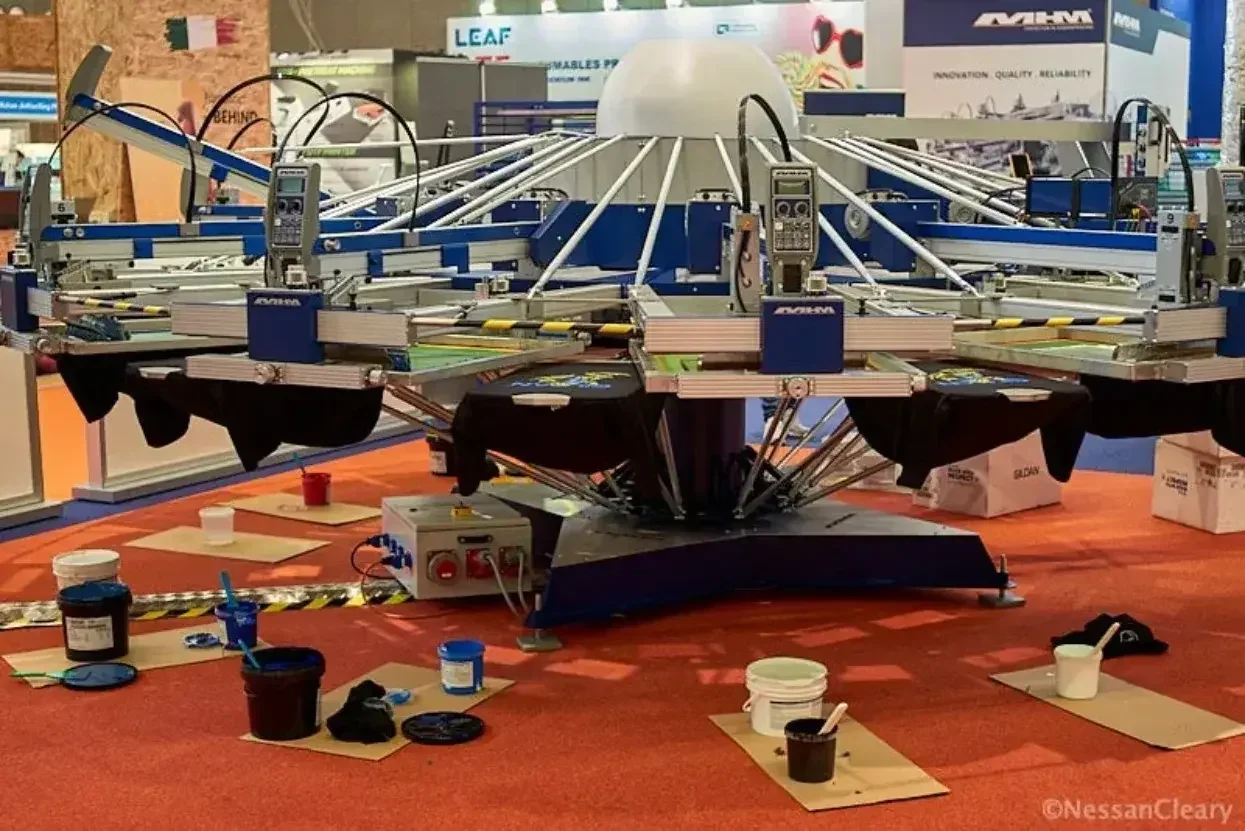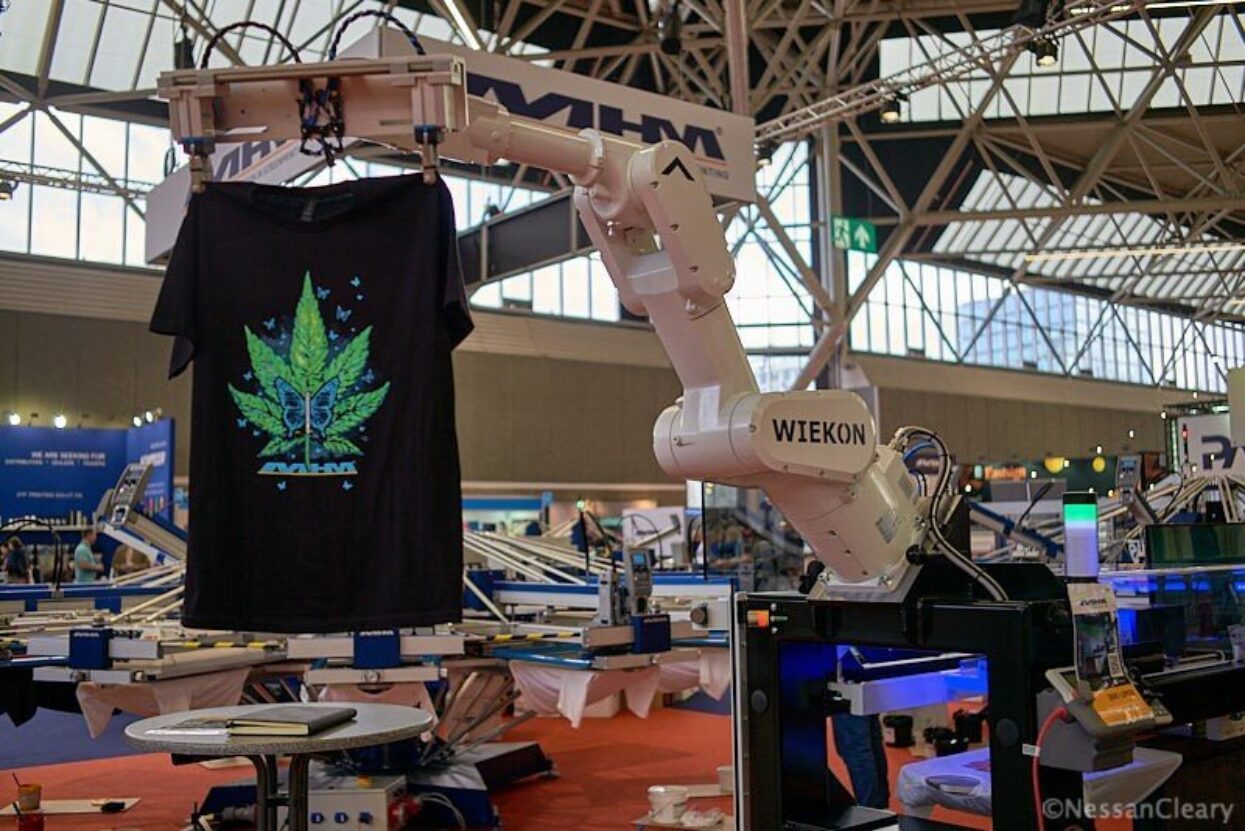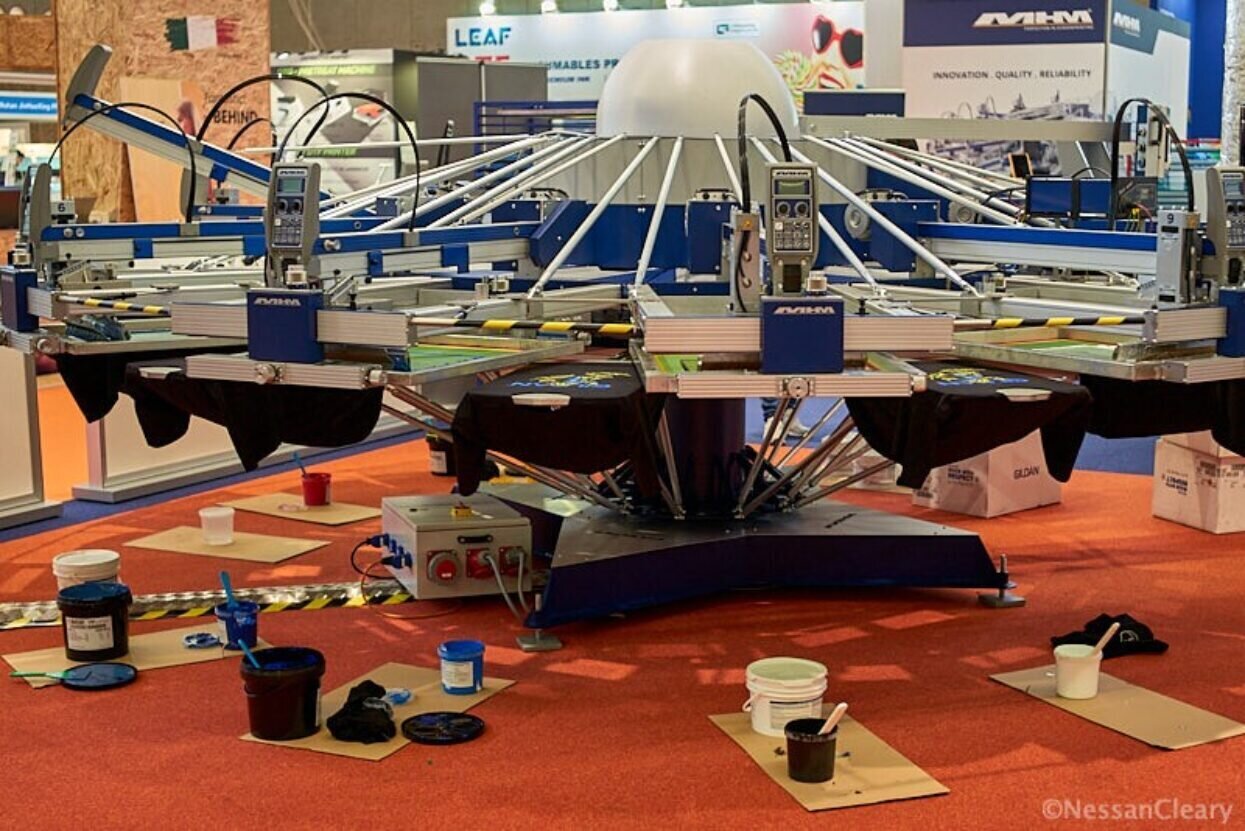
Nessan Cleary shares the various ink choices available for screen printing. Nessan shares the best and most suitable inks for screen printing for garments and factors that can affect this choice include if the materials are dark blended or light cotton.
There’s a lot of variety in screen printing, helped partly by the sheer number of ink manufacturers catering to screen printing. Not all inks are the same and the freedom to choose the ink that works best for a given application or that you’re most comfortable with gives screen printing a distinct advantage over the digital options. Screen printing is widely used in many industrial processes but for this story we’re just going to consider garment printing as there is not room here to cover all the different ways that screen printing is used.
For screen printing to garments there are three main classes of ink. The choice between them depends largely on the substrates you are printing to, but there are also some differences in their handling characteristics and, of course, in price.
Perhaps the most widely used type is plastisol ink. The ink contains both PVC resin and plasticiser. When the ink is heated, the resin absorbs the plasticiser, turning it from a liquid ink to a solid print. This ink will work with different substrates including cotton and blends though you may need specific formulations for some materials, particularly polyester and nylon. It’s quite viscous and has a long dwell time, which makes it easy to work with. It cures to a thick, tough finish that should give good longevity to printed garments. Most plastisol inks are supplied as RFU – ready for use – so that the ink can be used straight from the pot, and unused ink returned to the pot to cut down on waste.
The downside is that it can have quite a plasticky or rubbery feel, which can make it harder for the skin to breathe so that the t-shirts feel more sweaty. This will vary from one ink manufacturer to another depending on the formulation. Some formulations have been designed to have more stretch specifically for sports clothing. Many printers will add a soft base to reduce the thickness of the ink for a better hand feel.

Caption: Screen printing remains a viable solution for printing garments such as this. ©Nessan Cleary
The design of the graphic can also play a big part. A large image such as a photograph is always going to feel heavy when printed with plastisol inks. But a simpler design with less graphic elements or just a small logo may not add much to the feel of the garment. Also, limiting the number of colours and using a high mesh count can lead to relatively soft prints despite the plastisol ink.
In the past the plasticiser contained phthalate but this has been phased out since a US law passed in 2008 and many inks now use acrylic polymers in place of PVC, mainly due to pressure from brands. However, you will still need to use solvents for the clean-up, which is not very environmentally-friendly.
Water-based options
The main alternative to plastisol are water-based inks, which are becoming more popular because they are seen as more environmentally-friendly though water-based inks tend to be more expensive. This ink is not as thick as the plastisol ink and tends to soak into the fabric rather than sitting on top, which gives the prints a softer, more natural feel. However, the ink works best when printed on white garments and can look dull on darker fabrics. You can improve this by printing a white layer first but the results are not as vibrant as the other ink types.

Water-based inks can be more challenging to work with, mainly because of the danger that they will dry out and clog the screens so that you have to be careful to keep the screen damp. You can add wetting sprays and retarding chemicals to improve the dwell time on the screens but this may increase the drying time. Some screen printing machines can spray water mist around the printheads to prevent the inks drying and clogging up the equipment.
It’s worth noting that water-based inks generally have a much shorter shelf-life than their plastisol counterparts. Water-based inks do require more drying time and therefore have higher energy costs. Most water-based inks are supplied premixed as ready to use. This ink generally work best with cotton or blends with a very high cotton mix.
Many ink manufacturers now offer High Solid Acrylic or HSA ink, which is still water-based but contains a thickening binder that acts a little bit like a plastisol ink. This stops the ink from drying out too quickly, so there’s less danger that it will dry out on the screen. It also allows the ink to stretch as other colours are printed on top, which makes it easier to create complex halftones. This ink can also be used for lycra or spandex garments.
The third option is discharge ink, which is mainly designed for printing to darker fabrics. This ink, which is also water-based, has to be mixed with an activator, which causes a chemical reaction on the fabric to pull out the dye that’s already on the fabric where the ink is applied. In some cases, the discharge agent can emit formaldehyde gas. The results can be a bit inconsistent, depending on the dye that was originally used to darken the fabric.
The advantage is that there’s no need to print a white layer as the discharge ink fills the blank spot, which helps the colours stand out from the darker fabric. Discharge ink will only work well with natural fibres such as cotton. It’s not the easiest ink to work with, because you have to mix the ink and activator paste together in the right combination and control the temperature while ensuring there is plenty of ventilation. That said, it can produce the best results of all the different types of ink particularly for darker materials, with the most natural hand feel.
In addition, there are also a number of special effects inks available including metallics, shimmer, and glow in the dark. These can all be used to add value to the garment.
In conclusion, its vital to pick the right ink for the substrate you are printing to. If you are printing to dark blended materials then a plastisol based ink is the best option. But for light cotton materials, then water-based inks will give a much more natural feel, and be more environmentally-friendly. Ultimately, of course, it comes down to producing the effect necessary to allow you to charge the price that you want for the garments you are printing.
To discover the latest content that covers a wide range of sectors including screen printing, inks and garment printing sign up for FESPA’s free monthly newsletter FESPA World available in English, Spanish and German.